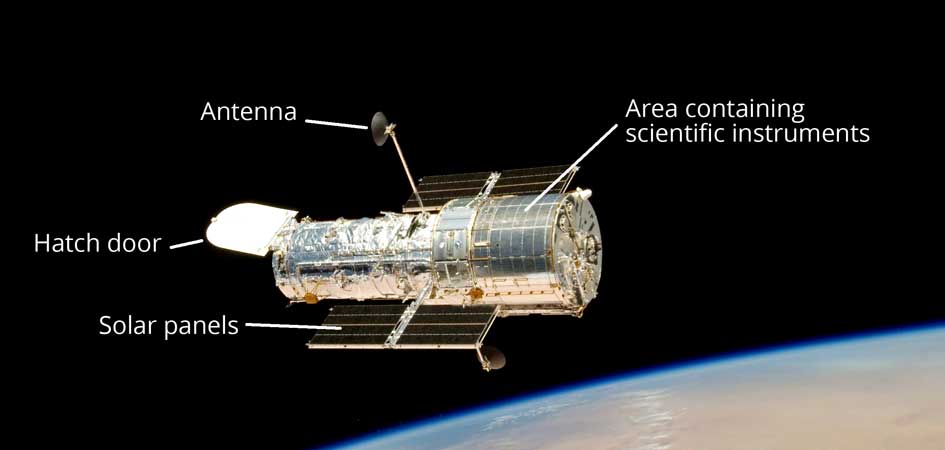The Hubble Space Telescope
This task is about the Hubble Space Telescope.
The Hubble Space Telescope (HST) was placed into an orbit around the Earth at an altitude of 610 km in April 1990. The Hubble weighs 11 tonnes on the Earth.

Source: Image: Nasa, Public domain

